
The Health Benefit of the Outdoors
Spending time outdoors offers a myriad of health benefits that contribute to overall well-being. Exposure to natural sunlight stimulates the production of vitamin D, crucial for bone health and immune function. Engaging in outdoor activities such as walking, hiking, or gardening promotes physical activity, leading to improved cardiovascular health, reduced risk of chronic diseases like obesity and diabetes, and enhanced fitness levels. Breathing fresh air and being surrounded by natural landscapes have been linked to lower stress levels, reduced anxiety and depression, and improved mood. Additionally, the sights, sounds, and scents of nature provide a sensory-rich experience that promotes relaxation and mental clarity. Furthermore, spending time outdoors fosters a deeper connection with the natural world, encouraging feelings of awe and gratitude, which in turn can have positive effects on mental and emotional well-being. In essence, embracing the outdoors is not only enjoyable but also a vital component of a healthy lifestyle.
You should start gardening for its myriad benefits that extend beyond just growing plants. Gardening offers a therapeutic escape from the stresses of daily life, allowing you to connect with nature and experience the satisfaction of nurturing life from seed to harvest. Beyond its mental and emotional rewards, gardening provides a tangible means of improving your health through access to fresh, nutritious produce and regular physical activity. It fosters a sense of environmental responsibility by promoting sustainable practices and reducing your carbon footprint. Gardening also cultivates a deeper appreciation for the natural world, teaching valuable lessons about patience, resilience, and the interconnectedness of ecosystems. Whether you have a sprawling backyard or just a few pots on a balcony, starting a garden empowers you to take control of your food, your health, and your relationship with the world around you.
.
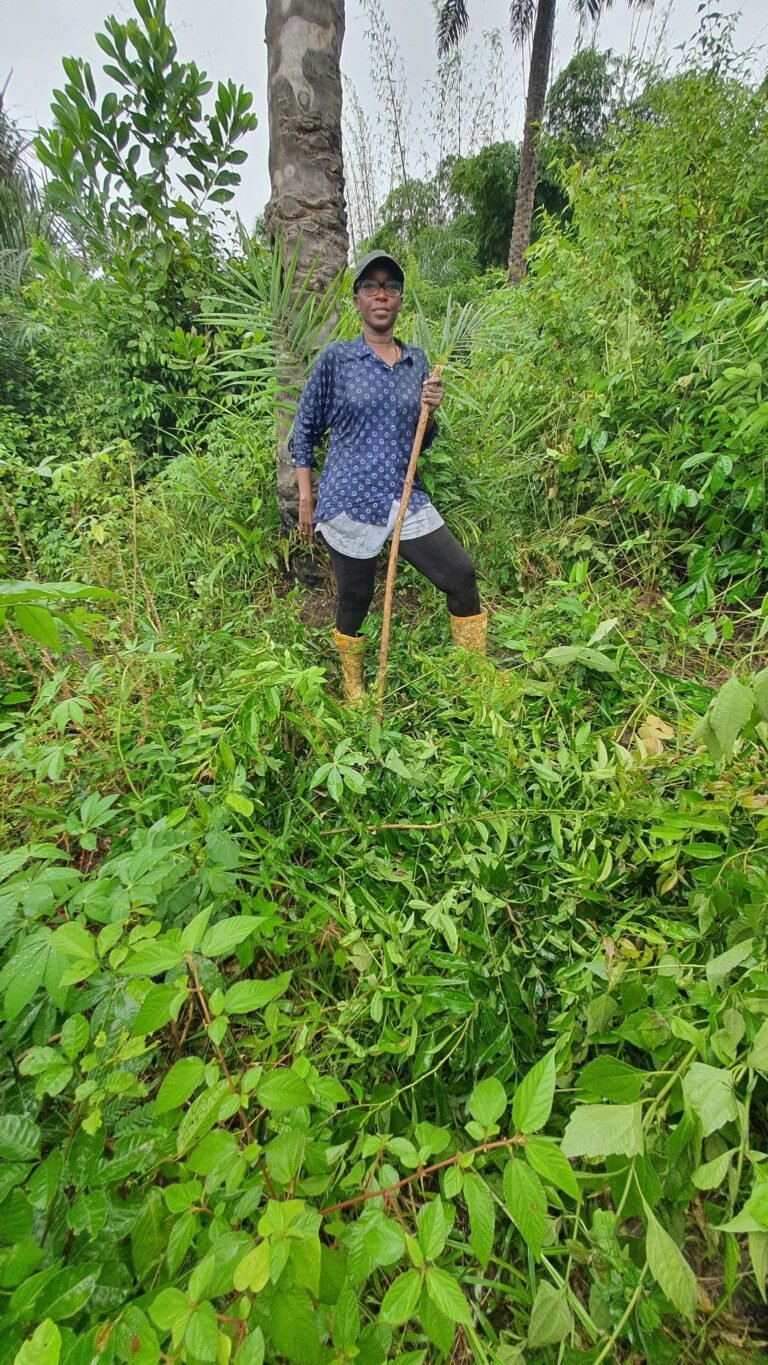

Being outdoors offers a multitude of benefits for both physical and mental well-being. Exposure to natural sunlight allows the body to produce vitamin D, essential for bone health and immune function. Furthermore, spending time outdoors encourages physical activity, whether it’s through walking, hiking, gardening, or other recreational activities, which in turn promotes cardiovascular health, reduces the risk of chronic diseases like obesity and diabetes, and improves overall fitness levels. The natural environment also provides a sensory-rich experience, stimulating the mind and reducing stress, anxiety, and depression. Breathing fresh air, surrounded by greenery and natural landscapes, has been shown to enhance mood, boost creativity, and increase feelings of happiness and relaxation. Moreover, spending time outdoors fosters a deeper connection with nature, instilling a sense of awe and appreciation for the world around us. In today’s increasingly indoor-focused lifestyle, prioritizing outdoor time is crucial for maintaining optimal physical and mental health.
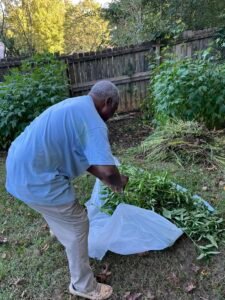



Embarking on the journey of growing a vegetable garden is an enriching experience that transcends age boundaries, offering valuable lessons and rewards for both the young and the old. For the young, nurturing a garden provides an unparalleled opportunity to connect with nature, learn about the lifecycle of plants, and develop essential skills like responsibility, patience, and problem-solving. It instills a sense of pride and accomplishment as they witness the fruits of their labor sprout from the earth, fostering a deeper appreciation for the food they consume and the environment in which it grows. For the old, gardening offers a source of physical activity and mental stimulation, promoting mobility, flexibility, and cognitive function. It serves as a therapeutic outlet, providing solace and purpose amidst life’s transitions and challenges. Moreover, tending to a vegetable garden enables the sharing of knowledge and traditions across generations, fostering bonds and creating lasting memories. Whether you’re young or old, cultivating a vegetable garden is not just about growing food—it’s about cultivating a connection to the earth, nurturing life, and sowing the seeds of a sustainable future for generations to come.
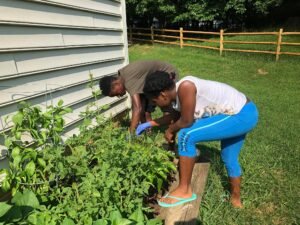
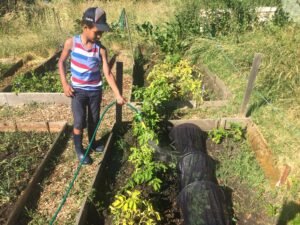


The personal satisfaction derived from growing your own vegetables is profound and multifaceted, transcending the mere act of cultivation. It begins with the anticipation of planting seeds or seedlings, nurturing them through every stage of growth, and finally witnessing the fruits of your labor flourish into vibrant, nourishing produce. This journey instills a sense of pride and accomplishment, as each harvested vegetable represents not just a meal, but a tangible manifestation of your efforts and care. There’s a unique joy in knowing exactly where your food comes from—having nurtured it from soil to table, free from harmful chemicals and unnecessary additives. Furthermore, the act of gardening fosters a deeper connection to nature, providing solace, inspiration, and a renewed appreciation for the wonders of the natural world. Whether it’s the taste of a freshly picked tomato or the satisfaction of sharing your bounty with friends and family, the personal satisfaction of growing your own vegetables extends far beyond the garden, enriching both body and soul.

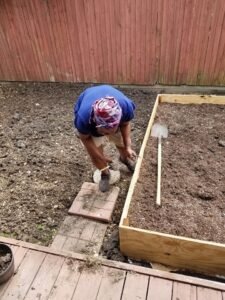

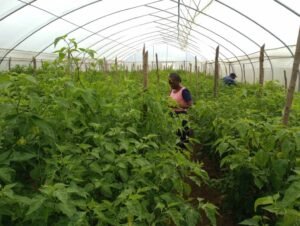
Regardless of the space available, whether it’s a vast plot of land, a greenhouse, a small urban plot, or even just a few buckets on a balcony, everyone has the opportunity to grow their own vegetables, starting with something as simple as a tomato plant. Tomatoes are incredibly versatile and resilient, making them an ideal choice for beginners and seasoned gardeners alike. With minimal space and resources, a single tomato plant can thrive, producing a bountiful harvest of juicy, flavorful fruits. Even in urban environments or limited living spaces, container gardening offers a viable solution, allowing individuals to cultivate tomatoes on balconies, patios, or windowsills. Beyond the practical benefits of homegrown produce, nurturing a tomato plant provides a sense of connection to the natural world, fostering a deeper appreciation for the simple pleasures of gardening and the satisfaction of harvesting your own food. Whether you have acres of land or just a tiny corner to spare, growing a tomato plant is a tangible reminder that anyone can cultivate a green thumb and experience the joys of homegrown vegetables.




Rediscovering the Joy: Allow me to enjoy myself in the Backyard Garden, where I can always connect with Nature.
In the hustle and bustle of modern life, finding moments of serenity and connection with nature has become increasingly precious. Amidst the concrete jungles and urban sprawl, the backyard garden stands as a sanctuary—a place where one can escape the chaos of the world and reconnect with the rhythms of the earth. The pleasure derived from a backyard garden transcends mere aesthetics; it encompasses a profound sense of fulfillment, rejuvenation, and harmony with the natural world.
A Haven of Tranquility
The backyard garden offers a refuge from the noise and stress of daily life. Stepping into this green oasis, one is enveloped by the soothing sounds of rustling leaves, chirping birds, and buzzing insects. Here, time seems to slow down, allowing for moments of quiet contemplation and reflection. Whether sipping morning coffee amidst blooming flowers or unwinding after a long day amid the gentle sway of lush foliage, the garden provides a tranquil escape from the demands of the outside world.
Cultivating Beauty and Creativity
A backyard garden is a canvas for creativity, a space where one can express their unique aesthetic sensibilities. From meticulously planned flower beds to whimsical arrangements of potted plants, each corner of the garden reflects the gardener’s personality and vision. The act of designing and nurturing a garden fosters a sense of pride and accomplishment, as each bloom and leaf serves as a testament to one’s care and dedication. Moreover, the ever-changing landscape of the garden offers endless opportunities for experimentation and discovery, inviting gardeners to continually explore new plants, colors, and textures.
Nurturing Life and Growth
At the heart of every backyard garden lies the miracle of life and growth. Planting seeds, tending to seedlings, and watching them flourish into mature plants is a deeply rewarding experience—one that fosters a profound appreciation for the cycles of nature. Whether cultivating a bountiful vegetable patch or coaxing delicate flowers into bloom, the act of nurturing life in the garden instills a sense of responsibility and stewardship for the natural world. Moreover, the garden serves as a habitat for a diverse array of creatures, from pollinating bees to nesting birds, fostering a sense of interconnectedness with the web of life.
Savoring the Fruits of Labor
One of the greatest pleasures of a backyard garden is the opportunity to harvest and enjoy its bounty. From ripe tomatoes bursting with flavor to fragrant herbs infused into savory dishes, homegrown produce offers a taste of pure freshness and vitality. Moreover, the act of harvesting and cooking with garden-fresh ingredients fosters a deeper connection to the food we eat, reminding us of the labor and love that goes into each meal. Whether sharing a harvest feast with friends and family or simply savoring a solitary meal amidst the beauty of the garden, the act of nourishing both body and soul brings profound satisfaction and joy.
Conclusion
In a world marked by constant change and uncertainty, the backyard garden stands as a timeless refuge—a place where the simple pleasures of nature can be savored and cherished. Whether through the beauty of its blooms, the bounty of its harvest, or the tranquility of its surroundings, the garden offers a sanctuary for the soul—a space where one can rediscover the joy of living in harmony with the rhythms of the earth.




Starting a backyard garden to grow your own vegetables can be a fulfilling and rewarding endeavor. Here’s a step-by-step guide to help you get started:
Assess Your Space:
– Evaluate your backyard to determine the best location for your garden. Look for an area that receives at least 6-8 hours of sunlight per day and has access to water.
– Consider the size of your garden and whether you want to create raised beds, traditional rows, or container gardens.
2. Plan Your Garden:
– Decide which vegetables you want to grow based on your preferences, climate, and available space.
– Research the specific requirements of each vegetable, including soil type, sunlight, and water needs.
– Consider companion planting to maximize space and discourage pests.
3. Prepare the Soil:
– Test your soil to determine its pH level and nutrient content. You can purchase a soil test kit from a garden center or send a sample to a local agricultural extension service.
– Amend the soil as needed by adding organic matter such as compost, aged manure, or peat moss to improve fertility and texture.
– Use a garden tiller or shovel to loosen the soil and remove any weeds or debris.
4. Build Raised Beds or Containers:
– If you’re opting for raised beds, construct them using untreated lumber, bricks, or concrete blocks. Make sure the beds are at least 6-12 inches deep to accommodate root growth.
– For container gardening, choose pots or containers that are large enough to accommodate the mature size of your plants and have drainage holes at the bottom.
5. Plant Your Vegetables:
– Follow the planting instructions for each vegetable, including spacing, depth, and timing.
– Consider starting seeds indoors several weeks before the last frost date in your area, or purchase seedlings from a local nursery.
– Plant vegetables in rows or blocks according to your garden plan, making sure to leave enough space between plants for growth.
6. Provide Care and Maintenance:
– Water your garden regularly, aiming for consistent moisture without overwatering. Use a soaker hose or drip irrigation system to deliver water directly to the roots.
– Mulch around plants to conserve moisture, suppress weeds, and regulate soil temperature.
– Monitor your garden for signs of pests or diseases, and take appropriate measures to control them using organic methods whenever possible.
– Fertilize your plants as needed with organic fertilizers or compost to provide essential nutrients for growth.
7. Harvest and Enjoy:
– Harvest vegetables when they reach their mature size and color. Use sharp scissors or pruners to avoid damaging the plant.
– Enjoy the fruits of your labor by incorporating homegrown vegetables into your meals, sharing with friends and family, or preserving for later use.
– Continually observe and learn from your garden, adjusting your techniques and practices to optimize growth and productivity.
By following these steps and staying attentive to your garden’s needs, you can cultivate a thriving backyard vegetable garden and enjoy a bountiful harvest of fresh, nutritious produce.
